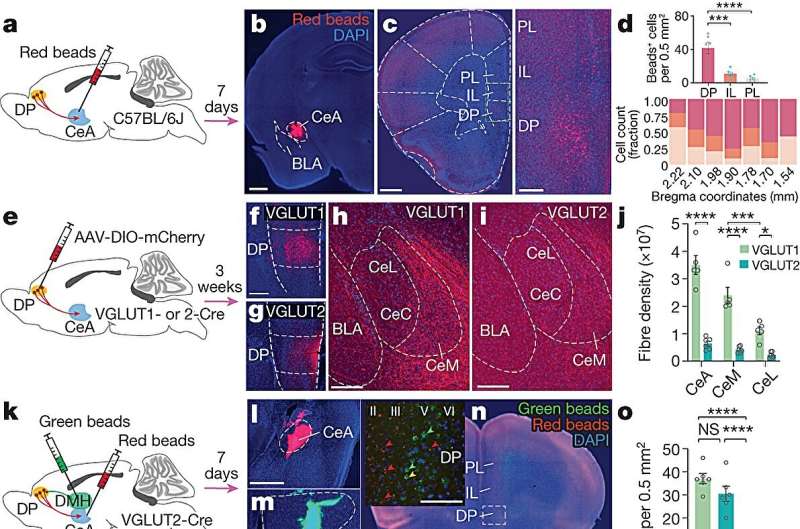This article has been reviewed according to Science X's editorial process and policies. Editors have highlighted the following attributes while ensuring the content's credibility:
fact-checked
trusted source
proofread
Scientists discover neural pathway that explains the escalation of fear responses

Scientists have discovered a new neural pathway involved in how the brain encodes the transition to high-intensity fear response behaviors that are necessary for survival, according to a recent study published in Nature.
Jones Parker, Ph.D., assistant professor of Neuroscience, of Pharmacology and of Psychiatry and Behavioral Sciences, was a co-author of the study.
In mammals, the amygdala is involved in generating survival responses and transitioning to different high-intensity fear behaviors such as freezing or immobility (avoidance behavior) to escaping (flight behavior) in response to perceived threats.
When these responses are dysregulated in humans, however, they can cause psychiatric illnesses such as post-traumatic stress disorder or anxiety and panic disorders. Until now, the precise source of the neural circuits involved in these responses had remained poorly understood.
In the current study, the investigators used mouse models developed by the laboratory of Jonathan Fadok, Ph.D., the Burk-Kleinpeter Inc. Professor in Science and Engineering at Tulane University and senior author of the study, to identify the neural circuits involved in the escalation of behavioral responses to high-intensity fearful situations.
Using a combination of techniques developed by Parker's lab, including in vivo calcium imaging, the scientists discovered a previously unknown connection between the brain's prefrontal cortex and the amygdala, which are involved in emotional regulation and adaptive decision-making, that controls and regulates this transition to high-intensity fear behaviors.
The scientists then used chemogenetic and optogenetic techniques to manipulate this novel pathway in the mice and discovered a new neuronal projection involving neurotransmitter release from excitatory neurons in dorsal peduncular region of the prefrontal cortex, an understudied area of the brain, to neurons in the amygdala.
"We have the cortex, which is projecting to this ancient brain structure involved in fear processing, that taps into the amygdala and directly scales the level of fear that the animals are experiencing," Parker said.
Furthermore, molecularly characterizing such regions of the brain involved in this escalation of fear responses may help identify novel therapeutic targets for different psychiatric illnesses, Parker added.
"This links the prefrontal cortex—this area that expanded over evolution in humans, an area involved in expectations and predictions about our environment—to the ancient brain circuit that controls fear, so this could contribute to pathologies involving fear and how we conceptualize them," Parker said.
As for next steps, Fadok said his lab is currently performing a physiological analysis of the dorsal peduncular region of the prefrontal cortex to better characterize its neuronal population and overall function.
"By understanding what we call top-down control, so cortical control over these ancient structures that regulate fear, I think we can make major inroads to developing better treatments," Fadok said.
More information: Chandrashekhar D. Borkar et al, Top-down control of flight by a non-canonical cortico-amygdala pathway, Nature (2024). DOI: 10.1038/s41586-023-06912-w



















